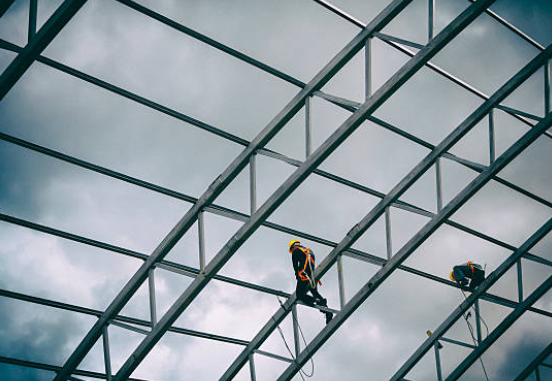
Posted on Monday, October 7, 2024
Steel trusses play a critical role in the construction of large metal buildings, such as warehouses and airplane hangars, providing essential support for expansive roof structures. This blog will delve into the manufacturing process of steel trusses and the precision required to ensure they can bear heavy loads while maintaining stability.
The manufacturing process begins with detailed design and engineering. Truss designs are typically created using computer-aided design (CAD) software, allowing engineers to simulate load conditions and ensure optimal performance. The design phase considers factors such as the span of the building, the type of loads the trusses will support (including live loads like snow and dead loads from the roof materials), and local building codes.
High-quality steel is essential for manufacturing durable and strong trusses. Steel's strength-to-weight ratio makes it an ideal choice for supporting large spans without excessive weight. Manufacturers often choose between structural steel shapes, such as wide-flange beams or tubular sections, depending on the specific design requirements.
Once the design is finalized and materials selected, the steel is cut into the required shapes using advanced machinery, such as plasma cutters or laser cutting systems. This precision ensures that each piece fits together perfectly during assembly.
After cutting, the steel components are fabricated, which may involve processes such as:
The fabricated components are then assembled into complete trusses. This step often takes place in a controlled factory environment, where skilled workers or automated systems can ensure precise alignment and connection of each part.
Trusses are typically assembled in sections, which are then transported to the construction site for installation.
Quality control is crucial throughout the manufacturing process. Each truss undergoes rigorous inspection to ensure it meets the specified tolerances and load-bearing capacities. This may include non-destructive testing methods to identify any potential weaknesses in the welds or materials.
To enhance durability and resistance to corrosion, steel trusses are often coated with protective finishes, such as galvanization or paint. This step is essential for trusses exposed to the elements, as it helps prolong their lifespan and maintain structural integrity.
Once on-site, the trusses are lifted into place using cranes and secured to the building's framework. Proper installation techniques are vital to ensure that the trusses are correctly aligned and that load distribution is even across the structure.
The manufacturing of steel trusses for large metal buildings is a complex process that requires meticulous planning, precise engineering, and skilled craftsmanship. Each step, from design to installation, plays a vital role in ensuring that these trusses can bear heavy loads and provide stable support for expansive roof structures. By understanding the manufacturing process, contractors can appreciate the importance of quality and precision in creating durable, long-lasting steel trusses.

Understanding Coil IDs, Mandrel Sizing, and Shear Pin Safety in Uncoilers
Posted on Wednesday, October 1, 2025
Mismatched sizes can lead to machine damage, downtime, and safety hazards — often evidenced by a shear pin failure.

How Coil Tensile Strength Affects Roll Forming and How to Adjust Your Machine
Posted on Wednesday, October 1, 2025
Changes in tensile strength can significantly affect the finished profile, causing misaligned bends, uneven edges, and out-of-spec parts.

Why Paint Cracks on an Embossing Line Running Pre-Painted Coil and How to Prevent It
Posted on Wednesday, October 1, 2025
This issue not only affects the visual quality of the product but can also lead to increased scrap rates and customer complaints.

The Most Popular Standing Seam Metal Roof Panels in the U.S. — A Comprehensive Guide
Posted on Monday, September 29, 2025
In this post, we’ll explore what panel styles and sizes are most popular in the U.S